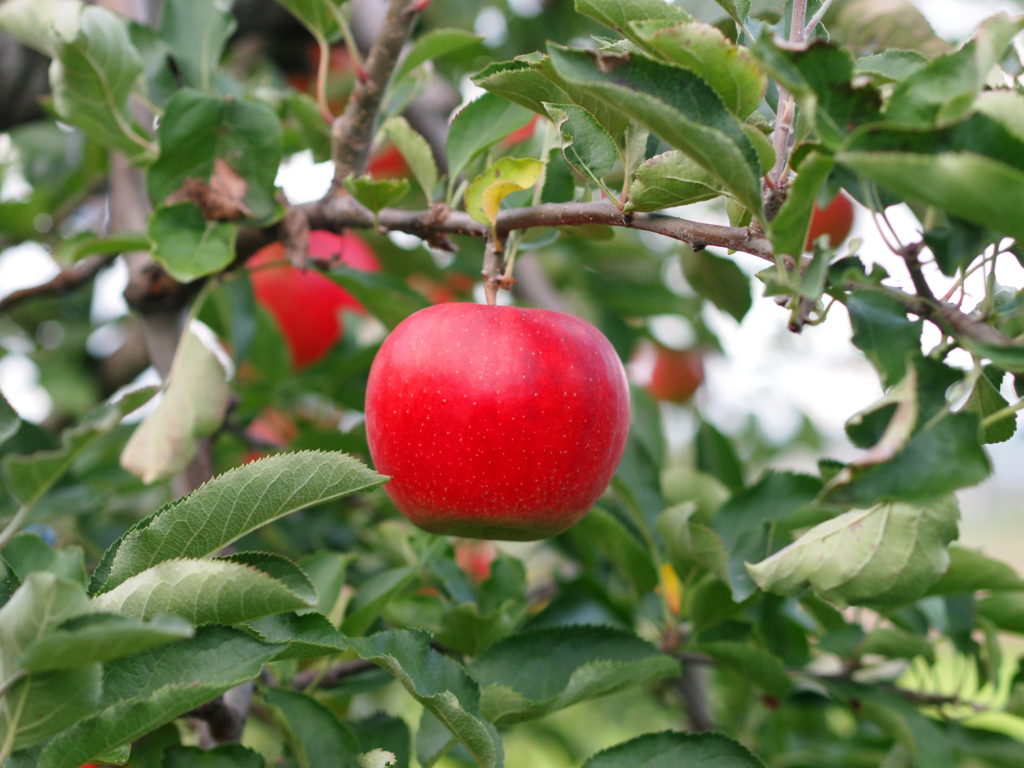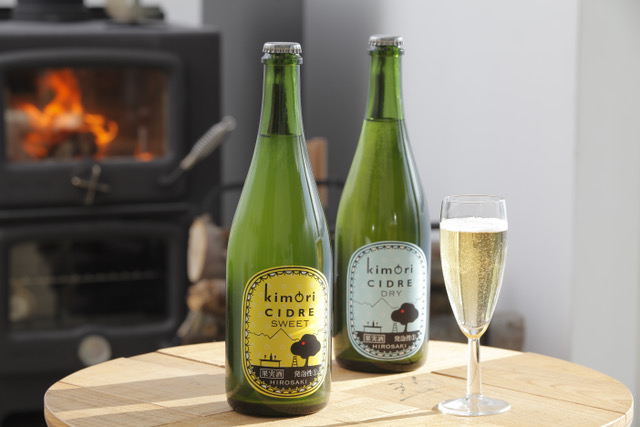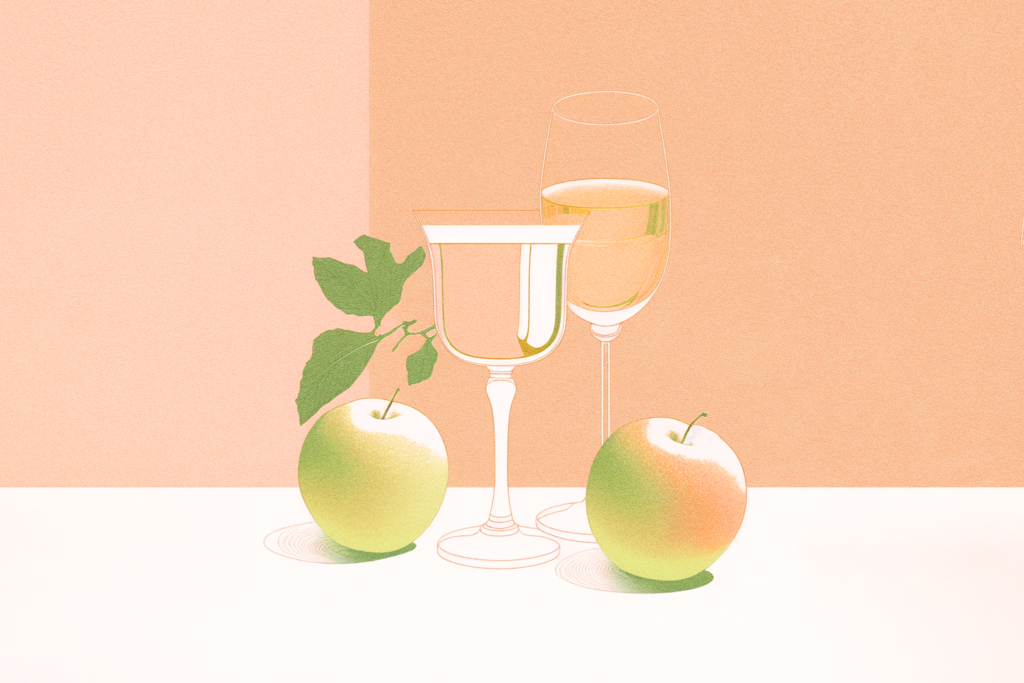Hirosaki City is located at the heart of Aomori Prefecture’s western Tsugaru region. You’ve probably already guessed that Hirosaki contributes to Aomori’s biggest export, apples, but did you know that the city alone produces 20 percent of the apples grown in the prefecture?
The Science of Apples
Over the decades, Hirosaki has found many uses to highlight the fruit’s variety of flavors and benefits, be it baked into a delicious pie or distributed in the form of apple-infused onsen water. To sip, there is apple juice (as you might expect) but also apple cider, for special occasions and celebrations. Hirosaki City has taken the lead in producing high quality ciders — usually labeled using the French term cidre — exploring numerous combinations of Aomori-grown apples, ratios and more. What is usually a fairly simple process, the city has turned into a science. People from all backgrounds who live and work in Hirosaki are coming together to see how they can seize their chance to transform this opportunity into sweet, bubbly liquid gold.
Tomoaki Saito is a lead researcher at Hirosaki Industrial Research Institute. He works with local producers and brewers to develop solutions to facilitate the production of products like apple cider. Over the last 20 years, interest in apple cider in Japan has grown significantly and it has become very popular. Until now, there was little to no guidance on how to profit from this new demand in the market. Saito saw a rare opportunity for collaboration between the various businesses in Hirosaki and within the Tsugaru region to create high-grade apple cider that aims match the quality and variety of Japanese wine and sake.
Another quality of Hirosaki worth noting is its unique conservation infrastructure, which allows producers and breweries to keep their stock of the star ingredient fresh year-round. This makes apple cider a more sustainable product to manufacture over many months — unlike sake, which is heavily seasonal.

Photo by FIFTYONE by Athi via Shutterstock
Making Apple Cider the Official Tsugaru Drink
Japan residents or fans of traditional Japanese culture might already be familiar with the Tsugaru region. It is the birthplace of author Osamu Dazai, who dedicated a whole novel to it. Tsugaru is also the birthplace of Tsugaru-jamisen, a particular style of music played on the traditional Japanese three-stringed instrument.
With the majority of the region actively involved in agriculture — and especially apple orchards — some farmers and brewers are looking to make Hirosaki-made apple cider a distinctively Tsugaru product. Chairman of the Hirosaki Cidre association and CEO of Kimori Cider Satoshi Takahashi said, “I want to make it the drink of the Tsugaru region.” This includes working on the development of a wide variety of ciders, including non-alcoholic options.

5 Aomori Ciders to Try
1. Sasino Cider Brut
Produced by Fattoria da Sassino in Hirosaki, this cider features a blend of five varieties of locally grown apples cultivated using the “no leaves” method. Pair with your favorite Italian dish for the perfect match.
2. Kimori Cider Dry
Another treasure out of Hirosaki, this cider is made from Sun Fuji apples. Maker Kimori accentuates the apples’ natural flavors by adding natural yeast from Shirakami-Sanchi during the fermentation process.
3. Tekikaka Apple Soda
For a sugar-free, additive-free and non-alcoholic alternative, pick Tekikaka Apple Soda. The Tekikaka series is characterized by its use of unripe fruit picked up to three months before the harvesting season.
4. Crazy Cider
Brewed in Hirakawa and made from Jonathan and Doki apples, this cider is crisp and refreshing. Enjoy on its own after a relaxing bath or alongside a cheese plate.
5. Wa Hachinohe Mix x Cider (Strawberry & Apple)
This cider from Hachinohe features a mix of Aomori-grown apples and strawberries and leaves a delicious sweet and tart aftertaste. The maker recommends pairing this bubbly with a ketchup-y craft burger.
Browse the full selection of Aomori ciders online.









